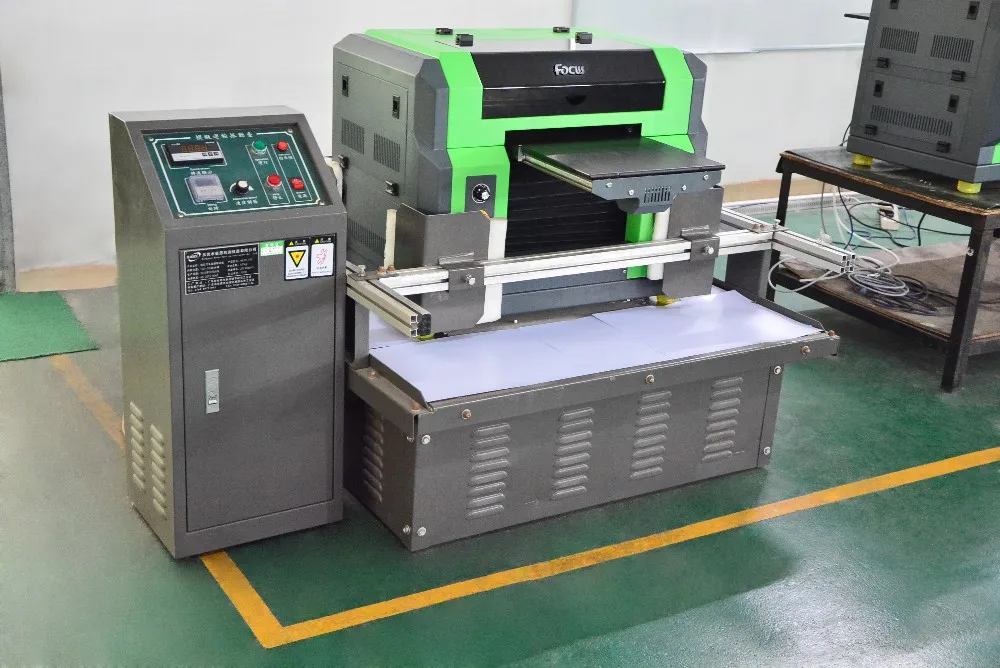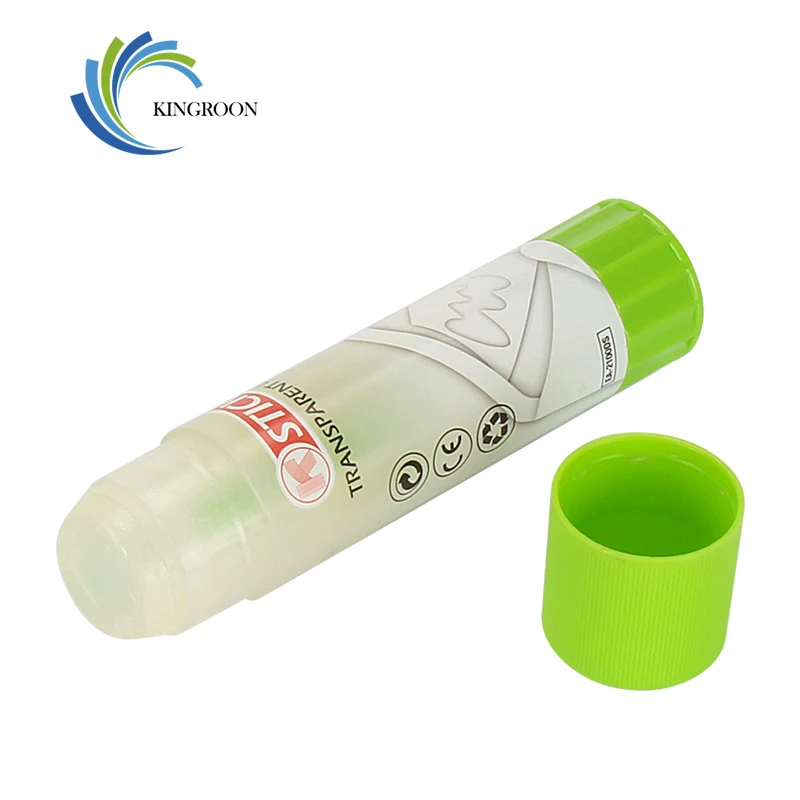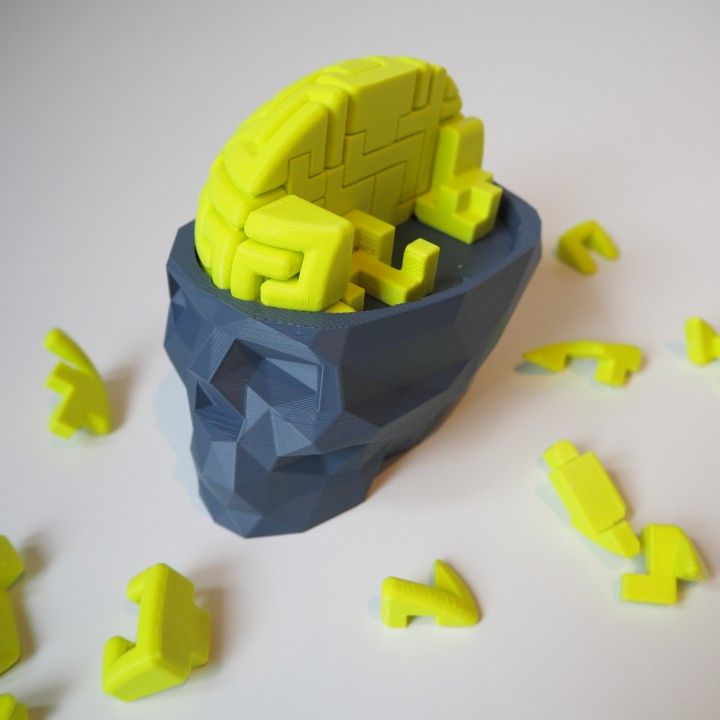Carbon fibre 3d printing filament
Ultimate Materials Guide - 3D Printing with Carbon Fiber
Overview
Carbon fiber filaments use tiny fibers that are infused into a base material to improve the properties of that material. Several popular filaments can be bought with carbon fiber fill including PLA, PETG, Nylon, ABS, and Polycarbonate. These fibers are extremely strong and cause the filament to increase in strength and stiffness. This also means that the 3D printed parts will be much lighter and more dimensionally stable, as the fibers will help prevent shrinking of the part as it cools. Print settings, such as printing temperature, speed, bed adhesion, and extrusion rates will be very similar to the normal settings used for the base material that the fibers were added to (for example, the stock PLA settings would be a good starting point for PLA-based carbon fiber filament). However, due to the added fibers, these specialty materials are more likely to clog and can require special hardware to avoid damaging the printer.
- Increased strength and stiffness
- Very good dimensional stability
- Lightweight
- Abrasive and requires hardened steel nozzle
- Increased oozing while printing
- Increased brittleness of filament
- Higher tendency to clog
Hardware Requirements
Carbon fiber filled filaments have the same requirements as the base filament it is infused with. The hardware requirements listed below are for carbon fiber filled PLA filament.
Bed
Temperature: 45-60 °C
Heated Bed Optional
Enclosure not required
Build Surface
Painter’s tape
PEI
Glass plate
Glue stick
Extruder
Temperature: 200-230 °C
Requires Wear Resistant Hardened Steel Nozzle
Cooling
Part Cooling Fan Required
Best Practices
These tips will help you reduce the chances of common 3D printing issues associated with carbon fiber filled filaments such as clogging and the nozzle wearing down.
Upgrade to Hardened Steel Nozzle
The carbon fibers in these filaments can be extremely abrasive. In many cases, the carbon fibers are actually harder than the brass nozzles used on most 3D printers, so trying to print these materials with a stock nozzle could damage the printer. Instead, plan on upgrading to a hardened steel hotend. These hotends can resist the added wear from the fibers, however, they also tend to be less thermally conductive than their brass counterparts. You may need to set the extruder temperature as much as 40° hotter than usual, which also helps with reducing the chance of a clog. Reducing the fan speed can also be useful to prevent thermal issues with the steel nozzles.
Adjust Retraction Settings to Avoid Clogs
Since the filament is full of small fibers that won’t melt, the chances of a nozzle clog are greatly increased over the base material. We recommend reducing your retraction distance or disabling retractions all together, as the retractions can increase the change of a buildup of fibers inside the extruder assembly. If you want to minimize the number of retractions that are performed, Simplify3D includes a very useful setting that will actually adjust the travel path of the extruder to stay within the interior of the part so that no retraction is needed. You can enable this setting by turning on the “avoid crossing outline for travel movements” option on the Advanced tab of your process settings.
If you want to minimize the number of retractions that are performed, Simplify3D includes a very useful setting that will actually adjust the travel path of the extruder to stay within the interior of the part so that no retraction is needed. You can enable this setting by turning on the “avoid crossing outline for travel movements” option on the Advanced tab of your process settings.
Reduce the Print Speed for Consistent Results
Using a slower print speed can be a big benefit for carbon fiber filled materials, as the extruder will be under less stress, and has a higher chance of pushing small clogs through the nozzle if they start to form. Try reducing your print speed by 25-50% to see what value works best for your specific brand of plastic. If you still experience clogs after making these changes, we have an entire section on our Print Quality Guide dedicated to this issue that includes several other tips to help troubleshoot this issue: How to Fix a Clogged Extruder.
Use a Guided Filament Path
Carbon fiber filled filaments tend to be far more brittle than the base filament and can snap easily if they are forced through tight corners, or rub on sharp edges of the printer frame. Make sure that the entire filament path, from the spool to the nozzle, consists only of gentle curves, with no sharp turns or areas where the filament will be dragged along a surface. Using a PTFE guiding tube, or ensuring that the filament spool is in a strategic place with regards to the extruder can help reduce the chance of filament breakage.
Pro-Tips
- Nozzles with larger diameters (0.5mm or more) are far less likely to clog, as the fibers will fit through the larger nozzle hole much more easily.
- If the nozzle seems to clog right away after printing the first layer or two, try increasing the first layer height. If the nozzle is too close to the bed, this will create increased back-pressure while printing these layers that can cause the fibers to build up and clog the nozzle temporarily.
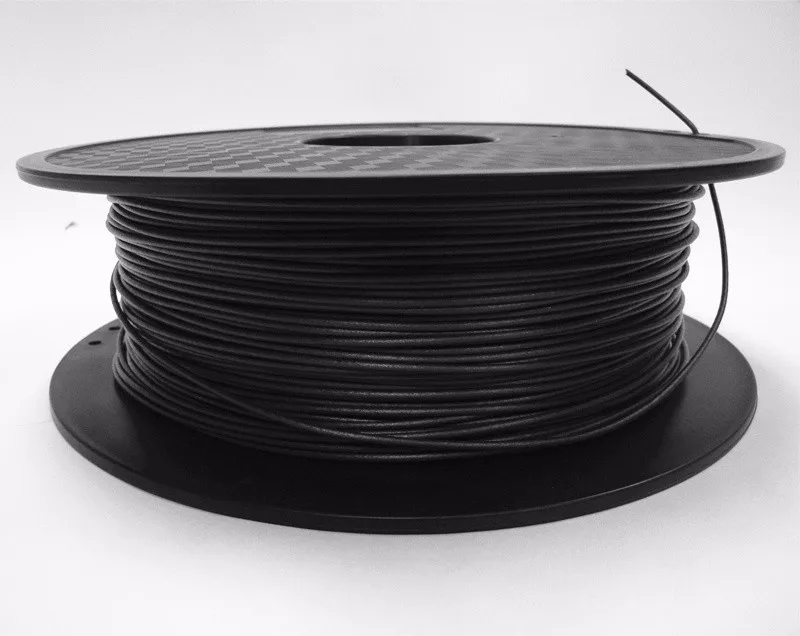
Get Started with Carbon Fiber Filled
There are many unique applications for this speciality material. We’ve compiled a few tips below to help you get started.
Common Applications
- R/C Vehicles
- Functional prototypes
- Decorative pieces
- Lightweight Props
Sample Projects
- F16
- Formula 1 Car
- Quadcopter
- Darth Revan’s Mask
Popular Brands
- Proto-Pasta Carbon Fiber Reinforced PLA
- Matterhackers NylonX
- 3DXTECH
What is it and why should we use it?
Mar 15, 2022
When we think of 3D Printing, perhaps the first thing that comes to mind is a plastic component that is not quite strong enough to be used for industrial applications. However, carbon fiber filament is changing the history of 3D Printing with its reliable and highly strong mechanical properties.When should you print with carbon fiber filaments?This type of filament is way stronger than a standard filament such as PLA or ABS.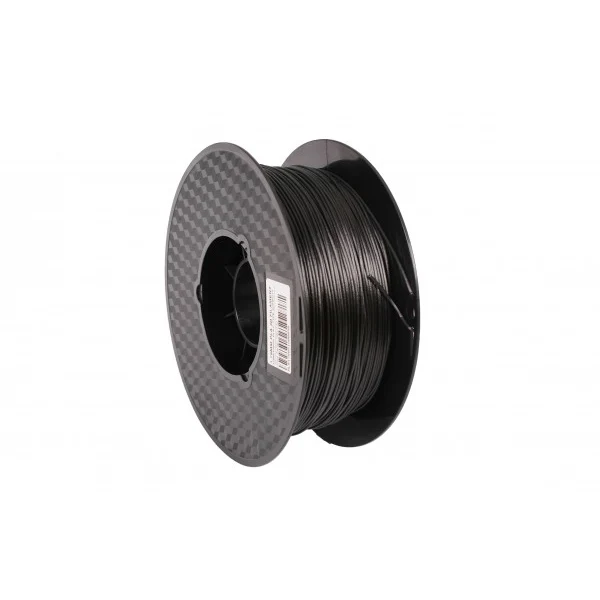 Furthermore, the quality of the surface is flawless and it is pretty lightweight, bearing in mind that their figures are very stiff. When you print with carbon fiber filament you do not have to worry about the dimensional accuracy of the model – since its particles do not contract, the figure won’t be smaller or bigger than desired.
Furthermore, the quality of the surface is flawless and it is pretty lightweight, bearing in mind that their figures are very stiff. When you print with carbon fiber filament you do not have to worry about the dimensional accuracy of the model – since its particles do not contract, the figure won’t be smaller or bigger than desired.
Another advantage compared to other filaments, especially with water-soluble filaments, is that PAHT CF15 and PET CF15 do not absorb moisture easily. This takes away any issues related to humid filaments which can happen easily with PVA or BVOH, filaments that you can use for supports.
So in the case that you need a strong and rigid figure that is resistant to high temperatures, consider these filaments. What makes these materials perfect for the automotive industry or for manufacturing tools is their ability to produce highly reliable prints suitable for any type of mechanical part.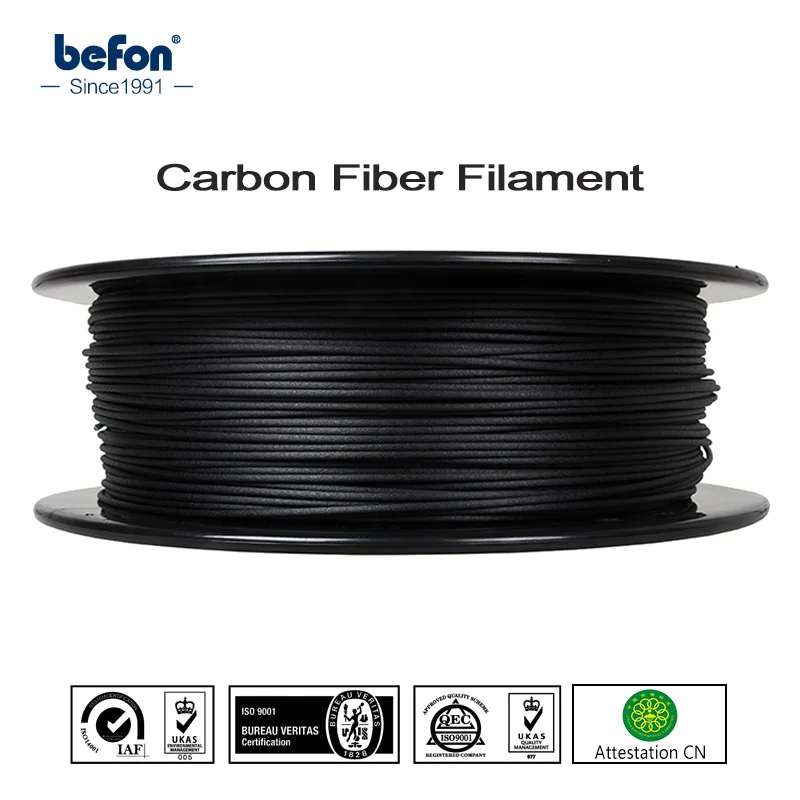
Carbon fiber in 3d printers:
In order to print with carbon fiber filaments, you need to use the hotend X, a special hotend that allows printing with abrasive materials. In case you print one of these filaments with a standard hotend, the hotend will be destroyed in a few minutes.
The two main carbon fiber filaments: PET CF15 and PAHT CF15At BCN3D, we use two different carbon fiber filaments that are highly reliable and easy to print. Let’s have a look at their properties so we can choose which one best fits our needs.
On the one hand, PET CF15 has the following key features:
- Impact resistance
- Stiff
- Very low moisture absorption
On the other hand, PAHT CF15 has the following key features:
- High temperature and chemical resistance
- Extreme mechanical properties
- Resistant to high temperatures
In most cases, both filaments would be a good fit for your project, but it is great to know the particularities of each one in order to successfully build a flawless and reliable object.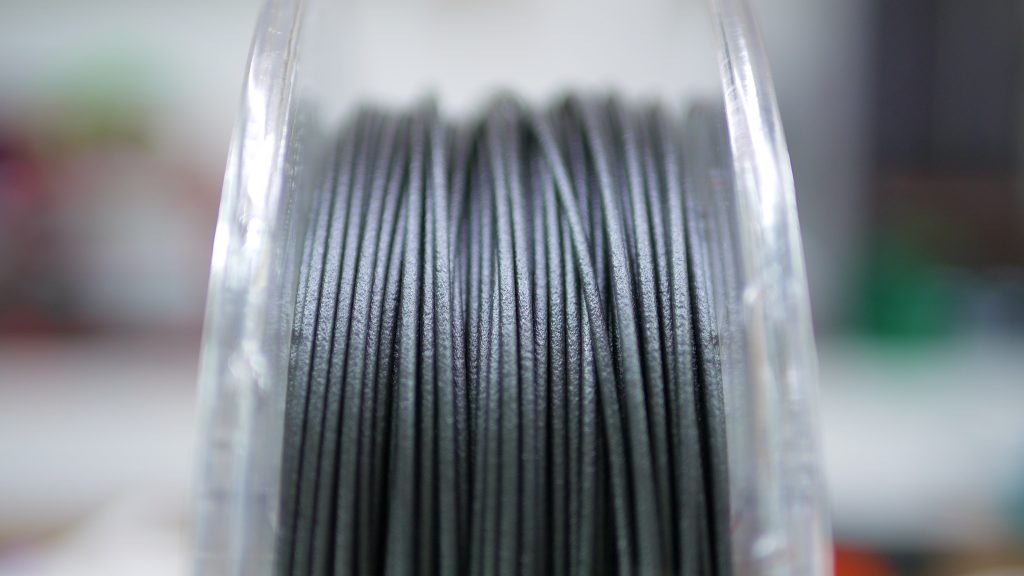
These types of filaments are mostly used in the automotive industry, although they can be used in other industries other than transportation such as robotics or industrial machines.
The transportation industry is the one that uses carbon fiber filaments the most. In fact, a Barcelona-based Design University called Elisava designed and built a 100% electric motorbike that used a few PAHT CF15 printed parts to build it. They used it for the parts that needed to be strong and heat resistant, although they used other filaments such as PA or ABS for other parts that have different properties – have a read of how they did it here.
As the main feature of the carbon fiber filament is its strength, you can use them for any parts that need to be strong and that won’t break under any circumstance such as a case for a fragile part.
For example, you can print your own push-up supports with PAHT CF15 knowing that they won’t break down even though you are putting a large amount of pressure on them.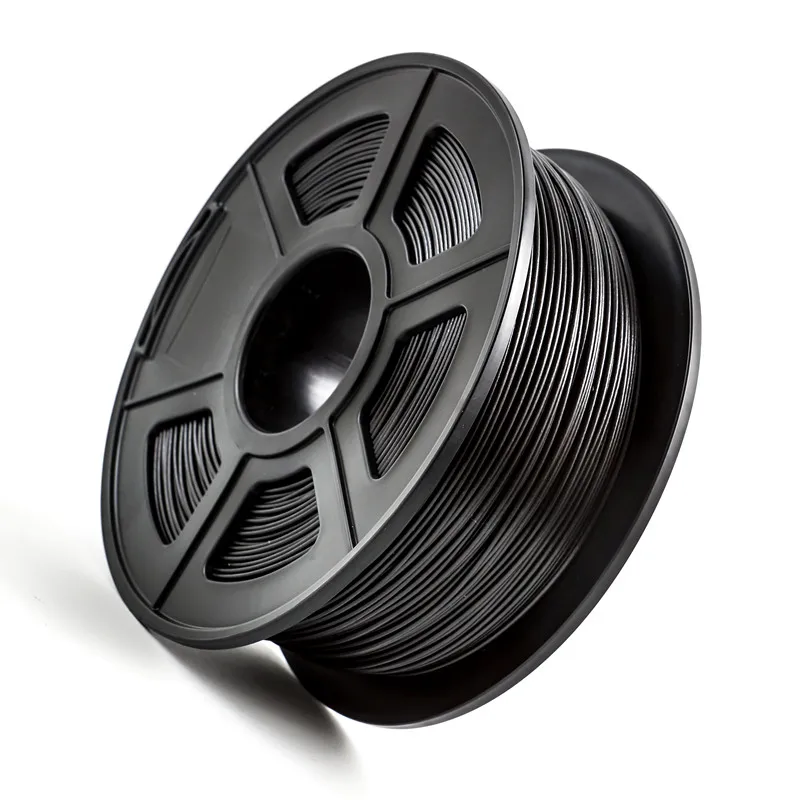
To summarize, carbon fiber filament is changing the history of 3D printing due to its reliability, heat resistance, and stiffness. Industrial companies around the world and vehicle manufacturers use them every day to print tools and parts to build the vehicles that we will use to travel in the future. You can learn more about fiber-filled materials in our free, specialized white paper or our entire range of filaments with our material selector.
Carbon Fiber 3D Printing Guide: Printers and Materials
Bicycles, race cars, drones and tennis rackets all have a variety of applications and require high strength and durability without added weight. This combination of properties is typical of carbon fiber composites, which are used in everything from Formula 1 racing car chassis to lightweight road bike frames.
Since many 3D printers commonly use polymer-based materials, including various composites, many people ask the question, "Can a 3D printer print carbon fiber?".
Indeed, there are two methods by which 3D printing can be used to create carbon fiber parts: supporting traditional fabrication methods with 3D printed molds, or direct 3D printing of carbon fiber composites. In this article, we'll look at traditional fabrication methods as well as new workflows for 3D printed carbon fiber molds and direct 3D printed carbon fiber composite parts.
Combining traditional carbon fiber parts with 3D printing
Carbon fiber is a composite material traditionally made by weaving long strands of carbon fibers together and then bonding them with a polymer. The yarns can be woven strategically so that the strength is directed along one specific vector, or so that the final product has multiple strengths in all directions. The resulting material is then molded into the desired end product using one of three processes: wet laid, pre-laminated, or resin transfer molding (RTM).
Wet Laid
Wet laid carbon fiber sheets are cut and pressed in a mould, then dyed with a liquid resin that cures to bind the sheets into the desired final shape.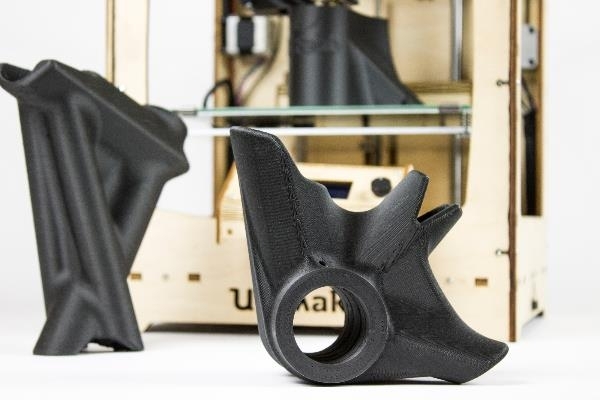 This method requires the least equipment and is the easiest to master for a beginner. Because most of the work can be done by hand, this is one of the cheapest methods, but the trade-off is that the resulting parts are less accurate to the master mold than parts made by other methods.
This method requires the least equipment and is the easiest to master for a beginner. Because most of the work can be done by hand, this is one of the cheapest methods, but the trade-off is that the resulting parts are less accurate to the master mold than parts made by other methods.
Prepreg lamination
In this method, the carbon fiber is already impregnated with resin and then placed in a mold that uses pressure and heat to form the final shape. This method is the most expensive due to the need for specialized equipment to store and process the pre-impregnated sheets, as well as a heated and pressurized forming machine. These factors also make it the most repeatable and consistent, and thus the most suitable for serial production of carbon fiber parts.
Resin transfer molding (RTM)
In RTM molding, the dry fiber is inserted into a two-part mold. The mold is clamped, after which high-pressure resin is injected into the cavity.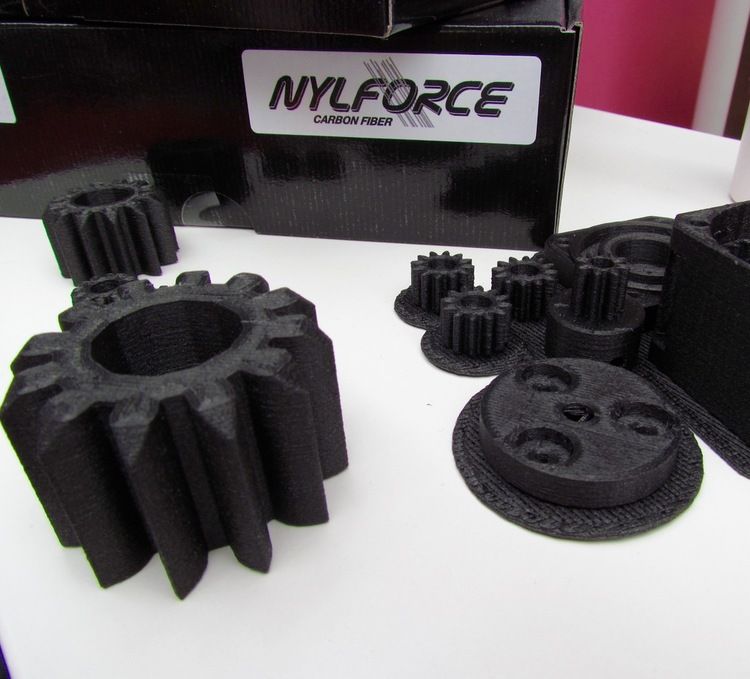 This method is usually automated and is used to produce large volumes of products.
This method is usually automated and is used to produce large volumes of products.
3D printed carbon fiber parts
For each of the three previous methods, 3D printing can be used to reduce costs and improve production times. All three traditional manufacturing methods require the use of a mold or multiple molds, which are traditionally created through labour-intensive subtractive processes such as wood, foam, metal, plastic or wax. 3D printing offers an alternative way to make molds. 3D printed molds are customizable and are more efficient and cost effective for small batch or custom production.
For applications requiring live prototypes, such as the automotive and aerospace industries, the iterative process can require hundreds of different shapes. Producing such iterations with traditional manufacturing methods can be costly and time consuming, so 3D printing provides an efficient way to produce small batches. Although 3D printed molds are not as suitable for high-volume production as metal molds, they can be created in-house, reducing costs, speeding up product development and validation, and short-term production.
Carbon fiber molds can be made in a variety of ways, but the smooth surface and wide choice of materials for SLA 3D printers make them a common choice for mold making in the factory. SLA-created parts have virtually no layer lines or porosity, so carbon fiber sheets can be pressed tightly into the mold without the fear of creating a textured surface.
Panoz, a manufacturer of racing and sports cars, needed a custom race car cabin duct to bleed the air out of the cabin and cool the temperature inside. In collaboration with DeltaWing Manufacturing, they used a Formlabs SLA 3D printer to print a high temperature resin part and then manually molded that printed part using high temperature epoxy for tooling. By using 3D printing, DeltaWing avoided outsourcing the costly metal mold for this custom carbon fiber part, reducing overall costs and delivery times.
Carbon fiber wing duct next to two piece mold printed with High Temp Resin made by DeltaWing Manufacturing.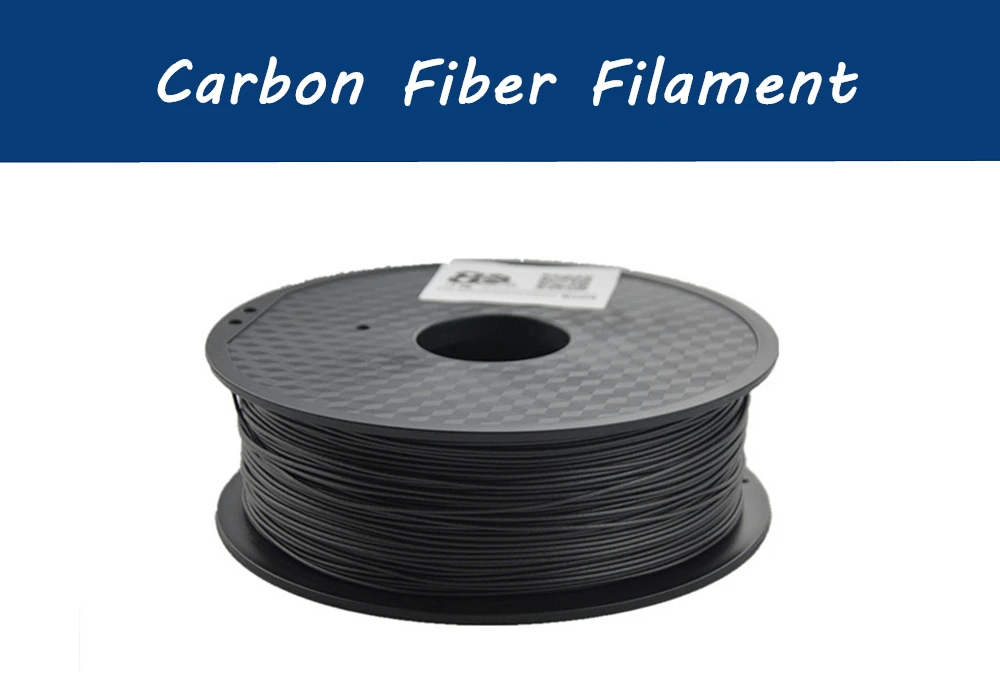
Direct Carbon Fiber 3D Printing
Looking for the best carbon fiber 3D printer? There is a strong demand for workflows that combine the strength, durability and wear resistance of traditional carbon fiber parts with the maneuverability, geometric capabilities and cycling of 3D printing. Therefore, it is not surprising that there are many companies offering 3D printing using carbon fiber, with two methods currently available: printing using chopped or continuous fibers.
Chopped Carbon Fiber 3D Printing
Chopped Fiber refers to 3D printing composite plastic materials that are impregnated with small pieces of carbon fibers. These crushed fibers add strength to the composite, which can be carbon fiber filament for FDM modeling or nylon powder for SLS 3D printing.
The main advantages of chopped carbon fiber reinforced materials over other types based on polymers are that they are strong, light, heat resistant and less prone to deformation.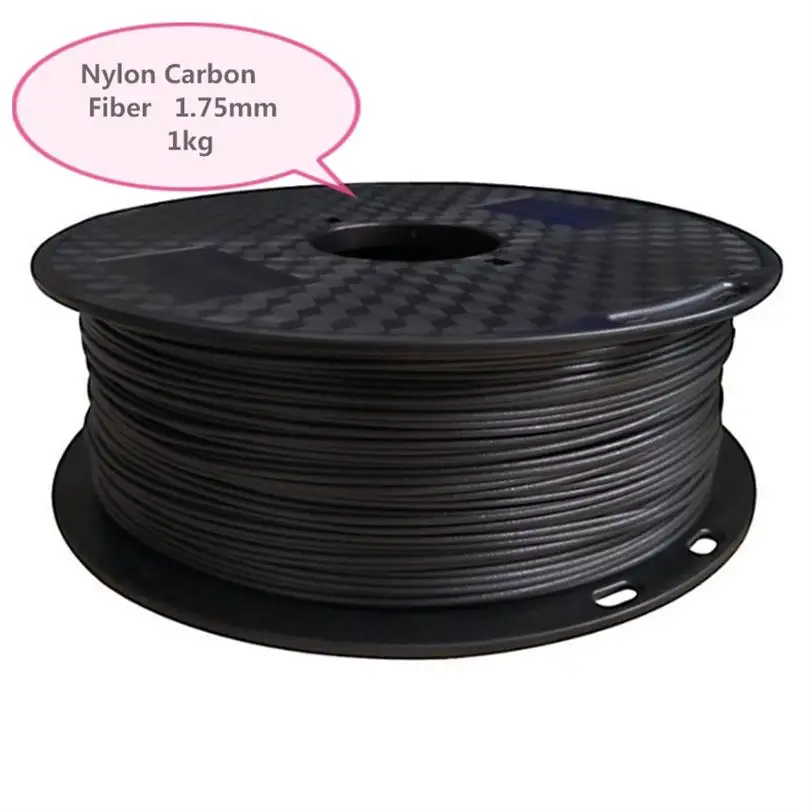 Compared to traditionally molded carbon fiber parts, chopped fiber 3D printing provides increased geometric flexibility in part design, especially in SLS 3D printing, potentially eliminating the labor involved with traditional molding or opening up innovative new opportunities for users to incorporate this material into the working process.
Compared to traditionally molded carbon fiber parts, chopped fiber 3D printing provides increased geometric flexibility in part design, especially in SLS 3D printing, potentially eliminating the labor involved with traditional molding or opening up innovative new opportunities for users to incorporate this material into the working process.
The Formlabs Fuse 1+ 30W SLS 3D Printer enables this type of carbon fiber 3D printing with Nylon 11 CF Powder, the strongest material in the Formlabs SLS material library. Fuse 1+ 30W is the most affordable high performance SLS printing option for shredded carbon fibers. Although traditional industrial SLS machines also offer some carbon fiber materials, the initial implementation costs negate much of the added value of 3D printing carbon fiber parts over RTM or prepreg lamination methods.
Formlabs Nylon 11 CF Powder is strong, lightweight and heat resistant making it ideal for the automotive, aerospace and manufacturing industries .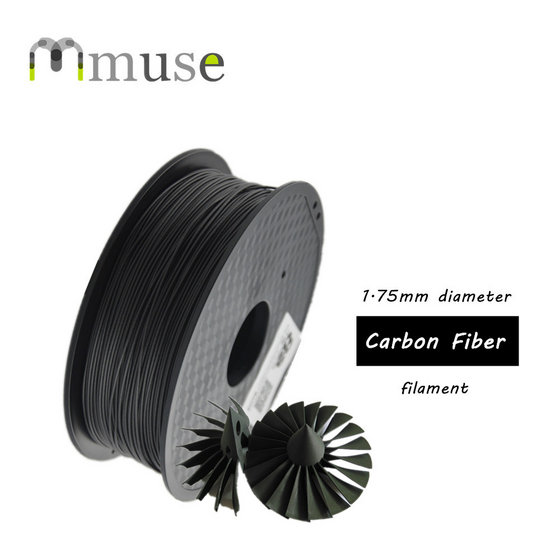
Many FDM 3D printers can handle carbon fiber filaments, but these materials are more difficult to print than standard ABS or PLA filaments, resulting in more clogs and more maintenance as the brass nozzles wear out. FDM 3D printers specifically designed to grind carbon fiber filaments are also available but are more expensive.
The main limitation of chopped-fiber printed parts using both SLS and FDM technologies is that they should be considered as more durable 3D printed parts, rather than a true alternative to traditional woven and continuous carbon fiber parts. fibers. They also provide the greatest increase in strength by positioning them in the X-plane direction for SLS printing, and in the XY-plane direction for FDM printing. Traditional methods of creating carbon fiber parts provide multidirectional strength through careful planning and placement of different carbon fiber sheets in a preform.
Carbon Fiber Continuous 3D Printing
Carbon Fiber Continuous 3D Printing is available on some dedicated FDM 3D printers, and the resulting parts are close in strength to traditional carbon fiber parts, but similar to chopped fiber printers FDM, only in the XY plane.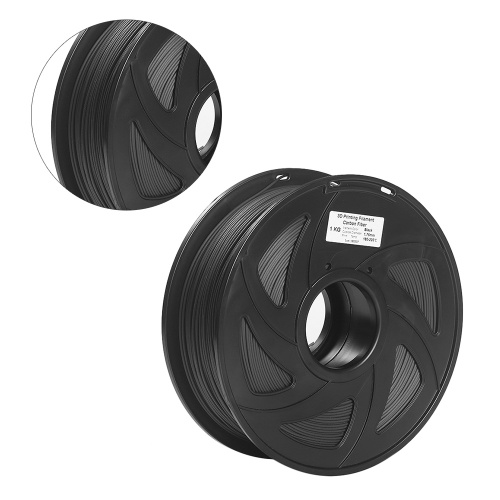 In such printers, continuous filaments of carbon fiber are mixed with a thermoplastic and the filaments can be applied strategically to selectively pressurize certain planes or axes. This method can use either a dual extruder nozzle to lay down a combination of carbon fiber and polymer filaments, or a 2-in-1 in which one nozzle lays down the carbon fiber filaments and the other heats and extrudes the filament.
In such printers, continuous filaments of carbon fiber are mixed with a thermoplastic and the filaments can be applied strategically to selectively pressurize certain planes or axes. This method can use either a dual extruder nozzle to lay down a combination of carbon fiber and polymer filaments, or a 2-in-1 in which one nozzle lays down the carbon fiber filaments and the other heats and extrudes the filament.
Continuous carbon fiber 3D printing offers an alternative comparable to traditional molded carbon fiber parts, albeit with limited design freedom. While these parts are incredibly strong, strength only appears in the XY planes and the models must be oriented so that their strength matches the direction of the applied force. In designs where possible, this method can be used to replace aluminum parts, as well as to create durable manufacturing aids or end-use parts.
Applications for 3D printed carbon fiber parts
The high strength, light weight, and impact, heat and chemical resistance of carbon fiber printed parts make them ideal for a variety of applications where 3D printing has never been was not considered.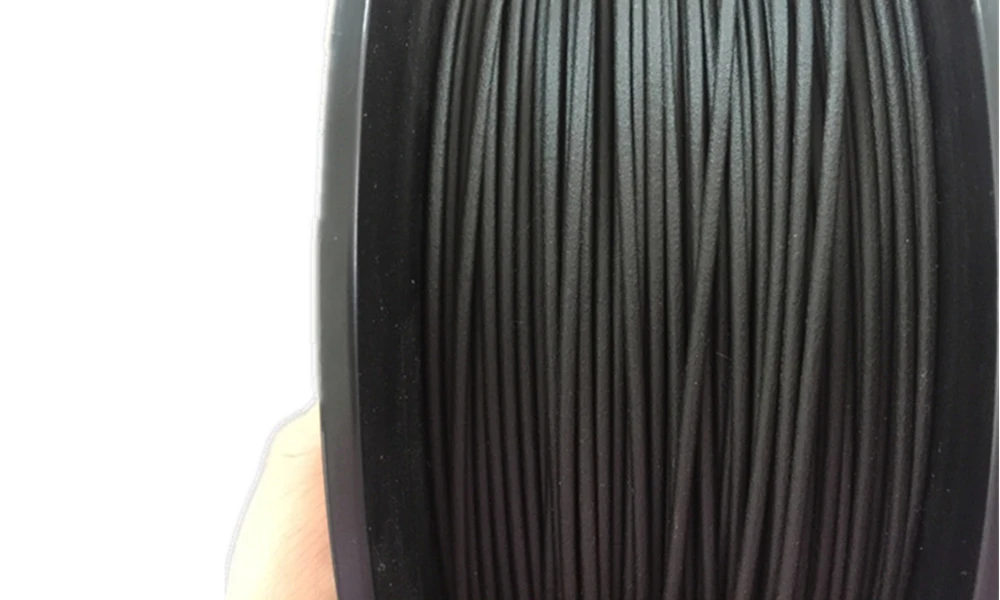 Now, these plastic and carbon fiber composite parts can withstand the heat generated by automotive or aerospace engine components, be used as a replacement for machined aluminum parts and manufacturing fixtures, and produce durable and impact-resistant equipment.
Now, these plastic and carbon fiber composite parts can withstand the heat generated by automotive or aerospace engine components, be used as a replacement for machined aluminum parts and manufacturing fixtures, and produce durable and impact-resistant equipment.
3D printed carbon fiber parts are ideal for rapid prototyping, the production of wear-resistant and durable production fixtures such as tooling and fixtures, and for low-volume production of durable end-use parts with complex geometries.
3D printing technology has opened up new possibilities in design and manufacturing, and 3D printing of carbon fiber composites has further expanded these possibilities, allowing users in the automotive, aerospace, defense, and manufacturing industries to quickly and efficiently produce high-strength, heat-resistant, geometrically flexibility. By bypassing traditional machining or molding processes, these users can more easily create custom parts, replacement parts and functional prototypes.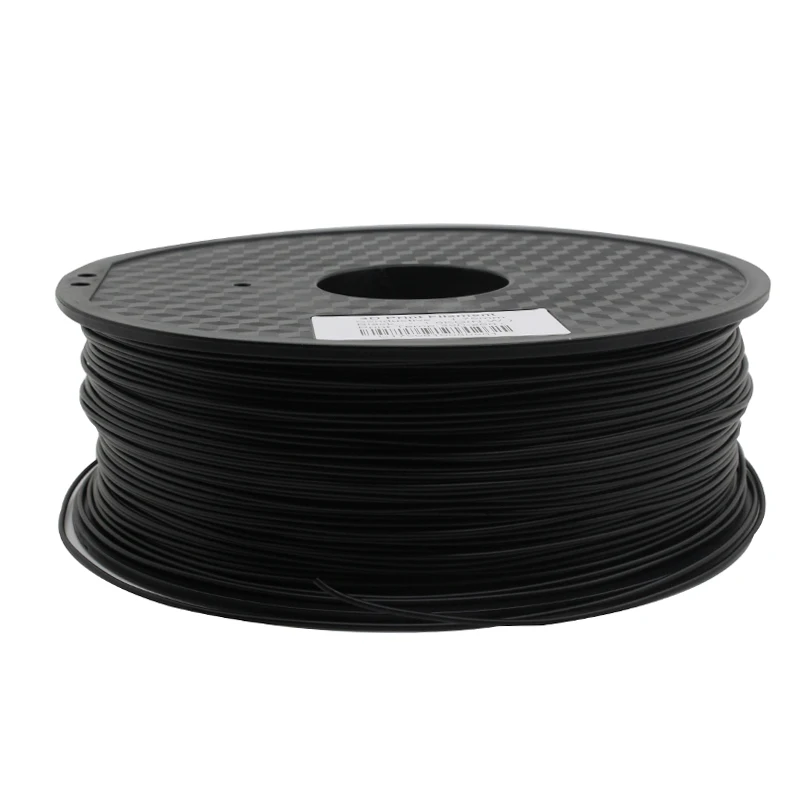 Although carbon fiber printed parts are not a complete replacement for traditional technologies due to the single plane of added strength, they are still stronger than almost all other plastics, making them exceptionally useful in many applications.
Although carbon fiber printed parts are not a complete replacement for traditional technologies due to the single plane of added strength, they are still stronger than almost all other plastics, making them exceptionally useful in many applications.
The right process for producing carbon fiber parts by molding or directly by 3D printing depends largely on the specific application and factors such as part design, production volume, and more. SLS 3D printing with shredded fibers offers the best option for those who want to produce parts that are strong, but not necessarily to the same degree as traditional molded carbon fiber parts.
Formlabs Fuse 1+ 30W with Nylon 11 CF Powder enables low-funding, fast-paced businesses to quickly iterate and produce end-parts with strength and better mechanical properties than traditional plastics. They can also functionally test their parts and then redesign with only minor CAD changes, improving their product performance and getting to market faster.
Everything you need to know about 3D printing carbon fiber
First produced by Joseph Swan in 1860, carbon fiber is made up of a long chain of carbon atoms bonded together. The chain is typically 5 to 10 micrometers in diameter and varies in length depending on the application. Over the years, carbon fiber has become popular in many sectors because it offers interesting properties, including high stiffness, high tensile strength, light weight, high chemical resistance, high temperature resistance, and low thermal expansion. Pure carbon fiber is actually five times stronger than steel and twice as stiff but lighter. As you can imagine, these characteristics make carbon fibers suitable for applications in sectors such as aerospace, automotive, military or civil engineering.
As some of you may already know, carbon fibers are rarely used on their own. They are usually combined with other materials to form what we call a composite material - in this particular case, these are materials reinforced with carbon fiber. These composites are made from a matrix material, usually a polymer, although it is possible to use non-polymer materials such as ceramics to which carbon fibers are added. The main advantage is that you end up with a stronger but lighter plastic with a higher level of stiffness.
These composites are made from a matrix material, usually a polymer, although it is possible to use non-polymer materials such as ceramics to which carbon fibers are added. The main advantage is that you end up with a stronger but lighter plastic with a higher level of stiffness.
The body of this bike frame is made of carbon fiber | Source: Arevo
Traditionally, carbon fiber composites have been used for structural design, where added weight results in increased life cycle costs or unsatisfactory performance. Carbon fiber composites can be used to create many products such as bicycle frames, aircraft fenders, propeller blades, automotive components, etc. As you can imagine, given the many benefits of carbon fiber, it is already being used by more than just traditional manufacturing systems. In recent years, more and more 3D printing companies are offering carbon fiber reinforced materials or technologies. They are designed to work with this composite to provide better performance.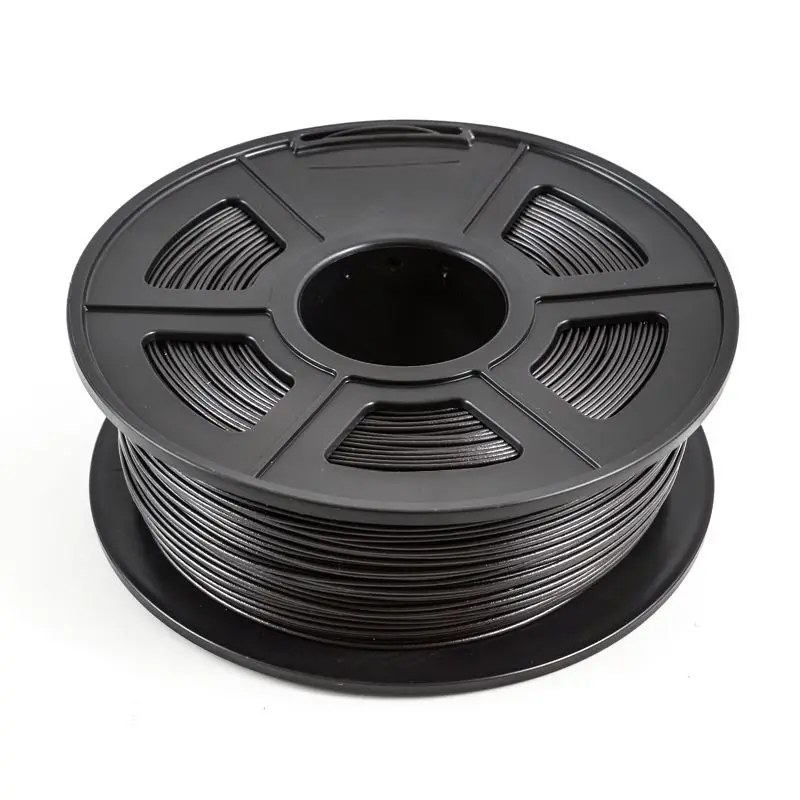 So how is carbon fiber being used in additive manufacturing?
So how is carbon fiber being used in additive manufacturing?
3D Printing Applications
In its 3D Printing Composites 2020 - 2030 report, IDTechEx reports that the global market for 3D printing composites will reach $1.7 billion by 2030. This figure also includes other composite materials, such as materials reinforced with fiberglass or plastic. However, this trend clearly demonstrates that the 3D printing industry is increasingly using all composites, including carbon, in their manufacturing activities. There are essentially two ways to use carbon fiber in 3D printing, the first is carbon fiber reinforced filaments and the second is continuous carbon fiber reinforcement.
Carbon fiber filament
Carbon fiber filament uses short carbon fibers composed of segments less than one millimeter long, which are mixed with a thermoplastic known as a base material. There are a number of popular filaments available with carbon fiber fill, including PLA, PETG, nylon, ABS, and polycarbonate. These fibers, being extremely strong, cause an increase in the strength and stiffness of the thread, and also reduce its overall weight. The requirements for 3D printing carbon fiber filaments should be the same as for the base material they were added to. The main difference is that fibers can clog 3D printer nozzles, so experts recommend using a hardened steel nozzle. In addition, when a certain threshold of fibers is exceeded, the part printed on a 3D printer loses its surface quality.
These fibers, being extremely strong, cause an increase in the strength and stiffness of the thread, and also reduce its overall weight. The requirements for 3D printing carbon fiber filaments should be the same as for the base material they were added to. The main difference is that fibers can clog 3D printer nozzles, so experts recommend using a hardened steel nozzle. In addition, when a certain threshold of fibers is exceeded, the part printed on a 3D printer loses its surface quality.
Carbon fiber segments embedded in thread for reinforcement | Source: Markforged
Some companies have developed carbon fiber fibers for more technical applications. These yarns use high performance polymers (HPPs) such as PEEK or PEKK as the base material. Consequently, they not only offer the benefits of HPPs such as durability and high mechanical and chemical performance, but also an improved strength to weight ratio. Print settings need to be adjusted as HPPs require extruders that can heat up to 400°C and systems that have heated chambers and build plates. Some of the carbon fiber filament manufacturers are: Roboze, 3DXTech, ColorFabb, Markforged, Kimya, Intamsys, Zortrax, etc.
Some of the carbon fiber filament manufacturers are: Roboze, 3DXTech, ColorFabb, Markforged, Kimya, Intamsys, Zortrax, etc.
Continuous carbon fiber reinforcement
Carbon fiber thread is definitely stronger than thread that has not been reinforced. However, to get an even stronger part, another method called continuous carbon fiber reinforcement can be used. Since carbon fiber is not cut into smaller pieces, it retains much more strength. In fact, continuous printing on carbon fiber is strong enough to be half the weight of aluminium. 3D printer manufacturers claim that they can replace metal 3D printing for some applications. And the main advantage is that it is cheaper than metal. Finally, by placing carbon fiber according to DfAM techniques, it is possible to increase the strength of the part while reducing material consumption.
Using DfAM methods, it is possible to strengthen a part using carbon fiber | Source: Anisoprint
There are several players on the market that offer technologies that can continuously print carbon fibers.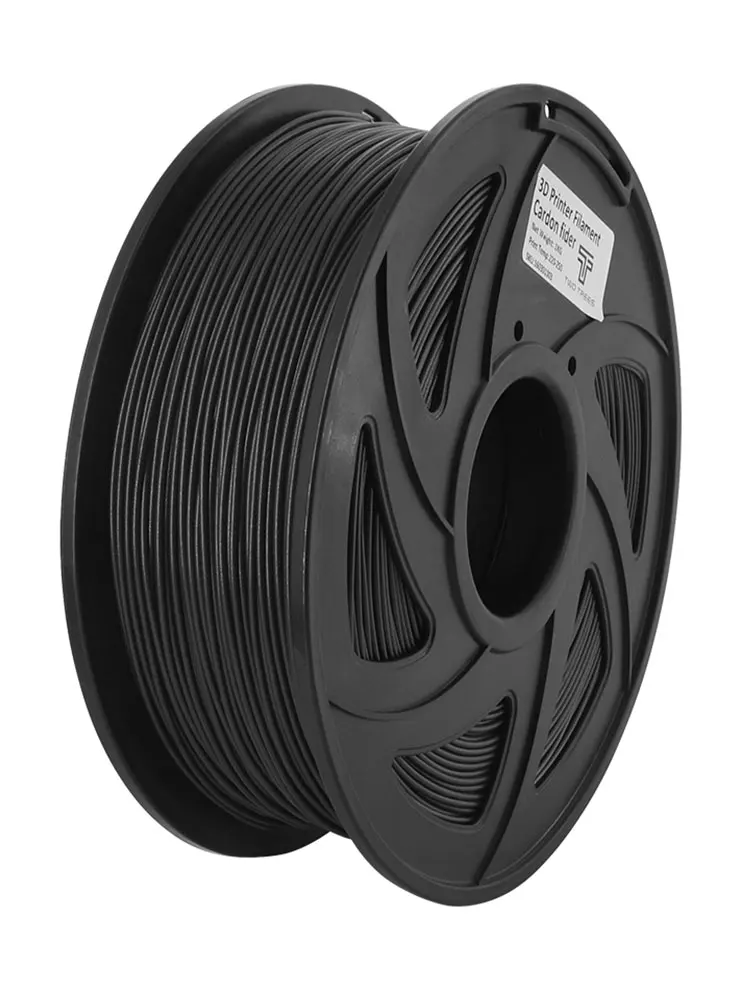 They can be divided into two main types, depending on when the carbon fiber is added (it can be added before the 3D printing process or during). When added earlier, continuous fiber 3D printing is known as backing prepreg, while when added during extrusion, it is called co-extrusion. In the prepeg technique, you also get a composite thread (or tape), but the carbon fibers have not been cut, instead they have been impregnated with a polymer through a pultrusion process.
They can be divided into two main types, depending on when the carbon fiber is added (it can be added before the 3D printing process or during). When added earlier, continuous fiber 3D printing is known as backing prepreg, while when added during extrusion, it is called co-extrusion. In the prepeg technique, you also get a composite thread (or tape), but the carbon fibers have not been cut, instead they have been impregnated with a polymer through a pultrusion process.
Members offering continuous fiber 3D printing include Markforged, Anisoprint, CEAD, etc. More recently, Desktop Metal has also joined the race with a new system called Fiber. Fiber uses Micro Automated Fiber Placement (µAFP). In addition, 9T Labs has developed additive synthesis technology (AFT) to mass-produce carbon composites at a lower cost.
Carbon 3D printing: other technologies
A departure from the better known extrusion process, an interesting technology is the patented AREVO process, based on directed energy deposition technology, in which a laser is used to heat filament and carbon fiber simultaneously as a roller presses them together.






